Fighters of the Second World War: the best of the best. The look of an engineer.
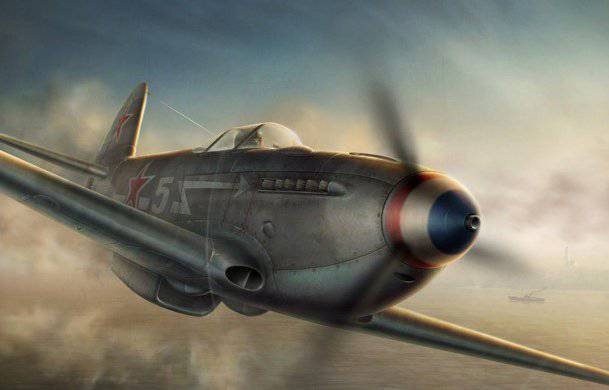
In the second world war aviation was one of the main branches of the armed forces and played a very large role in the course of hostilities. It is no accident that each of the warring parties strove to ensure a constant increase in the combat effectiveness of their aircraft by increasing the output of aircraft and their continuous improvement and updating. More than ever, scientific and engineering potential was widely involved in the military sphere, many research institutes and laboratories, design bureaus and testing centers worked, with the help of which the latest military equipment was created. It was a time of unusually rapid progress in aircraft construction. At the same time, as it were, the era of evolution of aircraft with piston engines, which reigned supreme in aviation since its inception, ended. Combat aircraft of the end of World War II were the most advanced examples of aircraft, created on the basis of piston engines.
The essential difference between the peaceful and military periods in the development of combat aircraft was that during the war, the effectiveness of technology was determined directly by experiment. If in peacetime, military specialists and aircraft designers, ordering and creating new models of aircraft, relied only on speculative ideas about the nature of a future war or were guided by limited experience of local conflicts, large-scale military operations dramatically changed the situation. The practice of air battles has become not only a powerful catalyst in accelerating the progress of aviation, but also the only criterion when comparing the quality of aircraft and choosing the main directions for further development. Each side improved its aircraft based on its own experience in the conduct of hostilities, availability of resources, capabilities of the technology and the aircraft industry as a whole.
During the war in England, the USSR, the USA, Germany and Japan, a large number of aircraft were created that played a prominent role in the course of the armed struggle. Among them are many outstanding samples. Of interest is the comparison of these machines, as well as the comparison of the engineering and scientific ideas that were used in their creation. Of course, among the numerous types of aircraft that took part in the war and were different schools of aircraft construction, it is difficult to identify the undoubtedly the best. Therefore, the choice of machines to some extent is conditional.
Fighters were the main means of winning air superiority in the fight against the enemy. The effectiveness of their actions largely depended on the success of combat operations of ground forces and other aviation branches, and the safety of rear facilities. It is not by chance that it was the class of fighters that developed most intensively. The best of them are traditionally called the Yak-3 and La-7 (USSR), North American P-51 "Mustang" ("Mustang", USA), Supermarine "Spitfire" ("Spitfire", England) and Messerschmitt Bf 109 ( Germany). P-51D, Spitfire XIV and Bf 109G-10 and K-4, that is, those aircraft that were built serially and entered service with the air force at the final stage of the war, were selected for comparison among the many modifications of Western fighters. All of them were created in 1943 - the beginning of 1944. These machines reflected the rich combat experience already gained by the warring countries by that time. They became like symbols of military aircraft of their time.
Before comparing different types of fighters, it is worth saying a little about the basic principles of comparison. The main thing here is to keep in mind those combat conditions under which they were created. The war in the East showed that when there was a front line, where ground forces were the main force of the armed struggle, relatively low altitudes were required from aviation. The experience of air battles on the Soviet-German front shows that the vast majority of them were conducted at altitudes up to 4,5 km, regardless of the height of the aircraft. The Soviet designers, improving fighters and engines for them, could not ignore this circumstance. At the same time, the English "Spitfires" and the American "Mustangs" were distinguished by greater altitude, since the nature of the actions for which they calculated were quite different. In addition, the P-51D had a much greater range required to accompany heavy bombers, and therefore was significantly heavier than the Spitfires, German Bf 109 and Soviet fighters. Thus, since the British, American and Soviet fighters were created under different combat conditions, the question of which of the vehicles as a whole was the most effective loses meaning. It is advisable to compare only the main technical solutions and features of machines.
It is different with the German fighters. They were intended to fight in the air on both the Eastern and Western fronts. Therefore, they can reasonably be compared with all the Allied fighters.
So what made the best fighters of the second world war stand out? What was their fundamental difference from each other? Let's start with the main thing - with the technical ideology laid by the designers in the designs of these aircraft.
The most unusual in terms of the concept of creation were, perhaps, "Spitfire" and "Mustang".
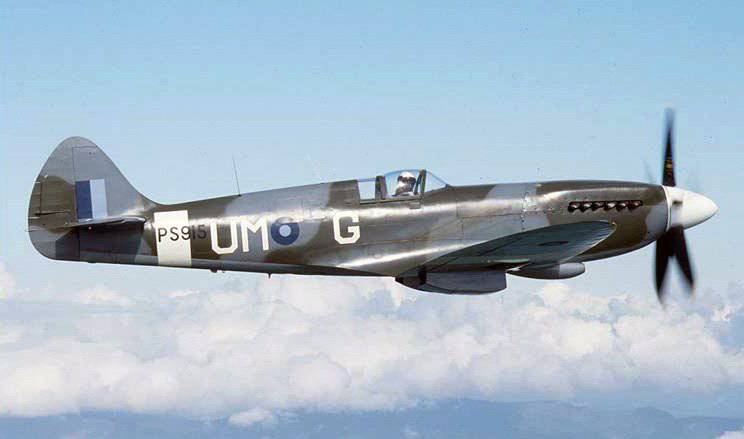
“This is not just a good plane, this is“ Spitfire! ”- such an assessment of the English test pilot G. Powell undoubtedly applies to one of the last fighters of this family of fighters - the Spitfire XIV, the best fighter of the British air forces of the war period. It was on the "Spitfire" XIV in the air battle that the German jet fighter Me 262 was shot down.
By creating a “Spitfire” in the middle of 30's, the designers tried to combine seemingly incompatible things: the high speed inherent in high-speed monoplane fighters entering life, with excellent maneuverable, high-altitude and take-off and landing characteristics typical of biplanes. The goal was mainly achieved. Like many other high-speed fighters, the Spitfire had the scheme of a self-supporting monoplane of well-streamlined forms. But it was only a superficial resemblance. For its weight, the Spitfire had a relatively large wing, which gave a small load per unit of bearing surface, much smaller than that of other monoplane fighters. Hence, excellent maneuverability in the horizontal plane, high ceiling and good take-off and landing properties. Such an approach was not something exceptional: Japanese designers, for example, did the same. But the creators of "Spitfire" went further. Because of the large aerodynamic drag of such a large wing, it was impossible to expect to achieve a high maximum flight speed - one of the most important indicators of the quality of fighters of those years. To reduce resistance, they used profiles of much smaller relative thickness than other fighters, and gave the wing an elliptical shape in plan. This further reduced aerodynamic drag when flying at high altitude and during maneuvering modes.
The company managed to create an outstanding combat aircraft. This does not mean that Spitfire was free from any flaws. They were. For example, because of the low load on the wing, it was inferior to many fighters in accelerating properties during dives. Slower than the German, American, and especially Soviet fighters, reacted on a lurch to the actions of the pilot. However, these shortcomings were not of a principled nature, and in general “Spitfire” was undoubtedly one of the strongest fighters of air combat, which in practice demonstrated excellent qualities.
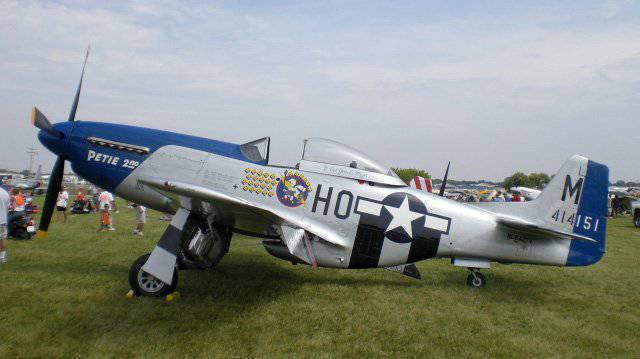
Among the many variants of the Mustang fighter, the greatest success fell to the share of aircraft equipped with British Merlin engines. These were the P - 51B, C and, of course, the P-51D - the best and most famous American fighter of the second world war. Just these planes from 1944 ensured the safety of the heavy American B-17 and B-24 bombers from the attacks of German fighters and in combat showed their superiority.
The main distinctive feature of the "Mustang" in terms of aerodynamics was the laminar wing, the first time in the world practice of aircraft manufacturing installed on a combat aircraft. About this "zest" aircraft, born in the laboratory of the American NASA research center on the eve of the war, should be said. The fact is that the opinion of experts about the advisability of using a laminar wing on fighters of that period is ambiguous. If before the war, the laminar wings had high hopes, because under certain conditions they had less aerodynamic drag than usual, then the experience with the Mustang diminished the initial optimism. It turned out that in actual operation such a wing is not effective enough. The reason was that the implementation of laminar flow on the part of such a wing required a very careful surface finish and high accuracy in keeping the profiling. Due to the roughness that occurred when applying protective paint on the aircraft, and even a small inaccuracy in the profiling that inevitably appeared in mass production (a slight waviness of thin metal plating), the effect of laminarization on the wing of the Р-51 was greatly reduced. In terms of their carrying properties, laminar profiles were inferior to normal ones, which caused difficulties in ensuring good maneuverability and take-off and landing properties.
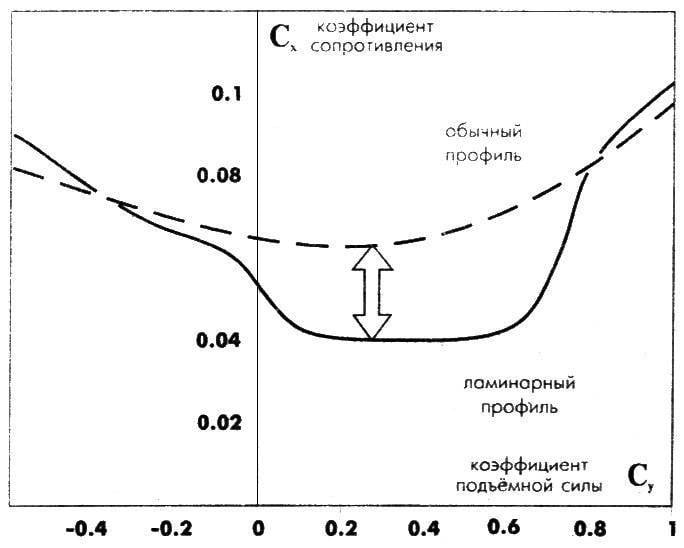
At low angles of attack, the laminar wing profiles (sometimes called laminated ones) have lower aerodynamic drag than conventional types.
In addition to reduced resistance, the laminar profiles had better speed characteristics — with an equal relative thickness, the compressibility effects of the air (wave crisis) were manifested at greater speeds than on profiles of the usual type. Already then it was necessary to be considered. In a dive, especially at high altitudes, where the speed of sound is significantly lower than that of the ground, the planes began to reach speeds at which the features associated with approaching the speed of sound were already apparent. It was possible to increase the so-called critical speed either by using higher-speed profiles, such as laminar ones, or by reducing the relative thickness of the profile, while reconciling with the inevitable increase in the weight of the structure and reduction in wing volumes, often used (including on the P-51D) for placing gas tanks and weapons. Interestingly, due to the much smaller relative thickness of the profiles, the wave crisis on the wing of the Spitfire occurred at a greater speed than on the wing of the Mustang.
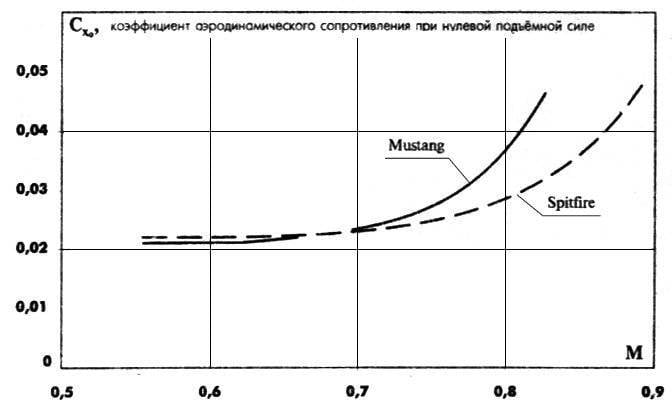
Studies at the RAE Aviation Research Center in England showed that, due to the significantly smaller relative thickness of the wing profiles, the Spitfire fighter at high speeds had a lower drag coefficient than the Mustang. This was due to a later manifestation of the wave crisis of flow and its more “soft” character.
If the air battles were fought at relatively low altitudes, the crisis phenomena of air compressibility almost did not manifest, therefore the need for a special high-speed wing was not acutely felt.
The way of creating the Soviet aircraft Yak-3 and La-7 turned out to be quite unusual. Essentially, they were deep modifications of the Yak-1 and LaGG-3 fighters, developed in 1940 and commercially available.
In the Soviet Air Force at the final stage of the war there was no fighter more popular than the Yak-3. At that time it was the easiest fighter. The French pilots of the Normandy-Neman regiment who fought on the Yak-3 spoke of its combat capabilities in this way: “The Yak-3 gives you complete superiority over the Germans. On the Yak-3 together you can fight against four, and four together against sixteen! ”
Radical processing of the Yak design was undertaken in 1943 in order to dramatically improve the flight performance with a very modest power plant. The decisive direction in this work was to facilitate the aircraft (including by reducing the area of the wing) and a significant improvement in its aerodynamics. Perhaps, this was the only opportunity to qualitatively promote the aircraft, since the Soviet industry had not yet mass-produced new, more powerful engines suitable for installation on the Yak-1.
Such an exceptionally difficult to implement, the development of aviation technology was extraordinary. The usual way to improve the flight data of the aircraft was then to improve aerodynamics without noticeable changes in the dimensions of the airframe, as well as to install more powerful engines. Almost always, this was accompanied by a marked increase in weight.
Designers Yak-3 with this arduous task coped brilliantly. Hardly in stories Aviation during the Second World War, you can find another example of a similar and so effectively done work.
Yak-3 compared with the Yak-1 was much lighter, had a smaller relative thickness of the profile and the area of the wing and had excellent aerodynamic properties. The power of the aircraft has increased significantly, which dramatically improved its rate of climb, acceleration characteristics and vertical maneuverability. At the same time, such an important parameter for horizontal maneuverability, take-off and landing, as the specific load on the wing, has changed little. In the war, the Yak-3 turned out to be one of the easiest fighters to pilot.
Of course, in tactical terms, the Yak-3 didn’t replace the planes, which were distinguished by stronger armament and longer combat flight, but perfectly complemented them, embodying the idea of a light, high-speed and maneuverable air combat machine, designed primarily to fight fighters the adversary.
One of the few, if not the only fighter with an air-cooled engine, which can rightly be attributed to the best fighters of air combat of the Second World War. On La-7, the famous Soviet ace I.N. Kozhedub shot down German 17 aircraft (including the Me-262 jet fighter) from the 62 he destroyed on La-class fighters.
The story of the creation of the La-7 is also unusual. At the beginning of the 1942, on the basis of the LaGG-3 fighter, which turned out to be a rather mediocre combat vehicle, the La-5 fighter was developed, differing from its predecessor only by the power plant (the liquid cooling motor was replaced with a much more powerful two-row star). In the course of further development of the La-5, the designers focused on its aerodynamic improvement. In the period 1942-1943. La-brand fighters were the most frequent "guests" in the natural wind tunnels of the leading Soviet aviation research center TsAGI. The main objective of such tests was to identify the main sources of aerodynamic losses and the definition of constructive measures to reduce aerodynamic drag. An important feature of this work was that the proposed design changes did not require major rework of the aircraft and changes in the production process and could be carried out relatively easily by serial plants. It was truly a "jeweler's" work, when, it would seem, quite a spectacular result was obtained from the mere trifles.
The fruit of such work was the La 1943FN, which appeared at the beginning of 5 - one of the strongest Soviet fighters of that time, and then the La 7 — an aircraft that rightfully took its place among the best fighters of the Second World War. While moving from La-5 to La-5FN, the increase in flight data was achieved not only due to better aerodynamics, but also thanks to a more powerful motor, then the performance of La-7 was achieved only by means of aerodynamics and weight reduction of the structure. This plane had a speed of 80 km / h more than the 5 La, of which 75% (that is, 60 km / h) gave aerodynamics. Such an increase in speed is equivalent to an increase in the power of the motor by more than a third, without increasing the weight and dimensions of the aircraft.
The best features of the air combat fighter embodied in the La-7: high speed, excellent maneuverability and climb. In addition, compared with the other fighters in question, he had more vitality, since only this plane had an air-cooled engine. As is known, such motors are not only more viable than liquid cooling engines, but also serve as a kind of pilot protection against fire from the front hemisphere, since they have large cross-section dimensions.
The German fighter Messerschmitt Bf 109 was created at about the same time as the Spitfire. Like the English plane, the Bf 109 became one of the most successful models of the war machine of the war period and went a long way of evolution: it was equipped with more and more powerful engines, improved aerodynamics, performance and flight characteristics. In terms of aerodynamics, the largest changes were last carried out in 1941, when Bf 109F appeared. Further improvement of the flight data was mainly due to the installation of new engines. Outwardly, the latest modifications of this fighter — the Bf 109G-10 and K-4 — differed little from the much earlier Bf 109F, although they had a number of aerodynamic improvements.
This aircraft was the best representative of the light and maneuverable fighting machine of the Hitlerite Luftwaffe. Throughout most of the Second World War, Messerschmitt Bf 109 fighters were among the best models of their class of aircraft, and only by the end of the war did they begin to lose their positions. It was impossible to combine the qualities inherent in the best Western fighters, designed for a relatively high altitude of combat use, with the qualities inherent in the best Soviet medium-height fighters.
Like their English counterparts, the designers of the Bf 109 aircraft attempted to combine high maximum speed with good maneuverability and take-off and landing qualities. But they solved this problem quite differently: unlike the Spitfire, the Bf 109 had a large specific load on the wing, which allowed for high speed, and to improve maneuverability, not only well-known slats, but also flaps were used, which at the right moment fights could be deflected by the pilot at a small angle. The use of controlled flaps was a new and original solution. To improve the take-off and landing characteristics, in addition to automatic slats and controlled flaps, hanging ailerons were used, which worked as additional sections of flaps; a controlled stabilizer was applied. In short, the Bf 109 had a unique system of direct control of lift, in many respects characteristic of modern aircraft with their inherent automation. However, in practice, many decisions of designers did not take root. Because of the complexity, we had to abandon the controlled stabilizer, the aileron hanging, the flaps exhaust system in battle. As a result, the Bf 109 was not very different from other fighters, both Soviet and American, in terms of its maneuverability, although it was inferior to the best domestic vehicles. Similar were the characteristics of take-off and landing.
The experience of aircraft construction shows that the gradual improvement of a combat aircraft is almost always accompanied by an increase in its weight. This is due to the installation of more powerful and, hence, heavier engines, an increase in the fuel supply, an increase in the power of the weaponry, the necessary reinforcements of the structure and other related measures. In the end, there comes a time when the reserves of this structure are exhausted. One of the limitations is the specific load on the wing. This, of course, is not the only parameter, but one of the most important and common to all aircraft. So, as the Spitfire fighters were modified from 1A to XIV and Bf 109 from B-2 to G-10 and K-4, their wing load increased by about a third! Already at Bf 109G-2 (1942) it was 185 kg / m2, while Spitfire IX, which was also released in 1942, had about 150 kg / m2. For Bf 109G-2, this wing load was close to the limit. With its further growth, the flight, maneuverability and take-off and landing characteristics of the aircraft deteriorated sharply, despite the very effective wing mechanization (slats and flaps).
Starting with 1942, the German designers improved their best air combat fighter under very heavy weight restrictions, which greatly narrowed the possibilities for improving the quality of the aircraft. And the creators of "Spitfire" still had sufficient reserves and continued to increase the power of the installed engines and to strengthen weapons, while not particularly considering the increase in weight.
The quality of their mass production has a great influence on the aerodynamic properties of aircraft. Careless production can negate all the efforts of designers and scientists. This happens not so rarely. Judging by the captured documents, in Germany, conducting a comparative study of the aerodynamics of German, American and British fighters at the end of the war, they concluded that the Bf 109G had the worst quality of production performance, and, in particular, for this reason its aerodynamics turned out to be the worst, It is likely that it can be extended to Bf 109K-4.
From what has been said, it is clear that in terms of the technical concept of the creation and the aerodynamic features of the layout, each of the compared aircraft is quite original. But they have many common features: well-streamlined forms, thorough engine nesting, well-developed local aerodynamics and aerodynamics of cooling devices.
As for the design, the Soviet fighters were much simpler and cheaper to manufacture than the British, German and, especially, American cars. Inadequate materials in them were used in very limited quantities. Thanks to this, the USSR managed to ensure a high rate of production of aircraft in the conditions of the most severe material constraints and a shortage of skilled labor. I must say that our country was in the most difficult situation. 1941 to 1944 inclusively a significant part of the industrial zone, where many metallurgical enterprises were located, was occupied by the fascists. Some plants were able to evacuate inland and establish production in new places. But a significant part of the production potential was still irretrievably lost. In addition, a large number of skilled workers and specialists went to the front. At the machines they were replaced by women and children who could not work at the appropriate level. Nevertheless, the aircraft industry of the USSR, though not immediately, was able to meet the needs of the front in aircraft technology.
Unlike all-metal western fighters, wood was widely used in Soviet machines. However, in many power elements, in fact, determined the weight of the structure, metal was used. That is why the level of weight perfection Yak-3 and La-7 practically did not differ from foreign fighters.
In terms of technology, ease of access to individual units and ease of maintenance, the Bf 109 and the Mustang looked somewhat preferable. However, the Spitfires and Soviet fighters were also well adapted to the conditions of combat exploitation. But on such very important characteristics as the quality of equipment and the level of automation, the Yak-3 and La-7 were inferior to Western fighters, the best of which were German planes (not only Bf 109, but also others) in terms of automation.
The most important indicator of high flight data of the aircraft and its combat effectiveness in general is the power plant. It is in the aviation engine building that the latest achievements in the field of technology, materials, control systems and automation find their first embodiment. Motor-building is one of the most science-intensive branches of the aviation industry. Compared to the aircraft, the process of creating and refining new engines takes much longer and requires more effort.
During the Second World War, England occupied the leading position in aviation engine building. It was the Rolls-Royce motors that were equipped with Spitfires and the best options of the Mustangs (P-51B, C and D). It can be said without exaggeration that the installation of the English motor “Merlin”, which was produced in the USA under the license by Packard, allowed the Mustang to realize its great potential and brought it to the category of elite fighters. Prior to this, the P-51 was, albeit original, but rather mediocre in terms of combat capabilities.
The peculiarity of the British engines, which largely determined their excellent characteristics, was the use of high-grade gasoline, the conditional octane number of which reached 100-150. This made it possible to apply a greater degree of pressurization of air (more precisely, the working mixture) into the cylinders and, thus, to obtain greater power. The USSR and Germany could not meet the needs of aviation in such high-quality and expensive fuel. Usually used gasoline with octane number 87-100.
A characteristic feature that united all the engines that stood on the compared fighters was the use of two-speed drive centrifugal superchargers (CMS), providing the required altitude. But the difference between Rolls-Royce motors was that their blowers had not one, as usual, but two successive stages of compression, and even with intermediate cooling of the working mixture in a special radiator. Despite the complexity of such systems, their use turned out to be fully justified for high-altitude engines, since it markedly reduced the loss of power expended by the motor for injection. It was a very important factor.
The original was the engine injection system DB-605, driven by a turbo-coupling, which, with automatic control, smoothly adjusted the gear ratio from the motor to the impeller of the supercharger. In contrast to the two-speed drive superchargers, which were based on Soviet and British engines, turbo-coupling allowed to reduce the power drop that occurred between the speeds of discharge.
An important advantage of German engines (DB-605 and others) was the use of direct fuel injection into the cylinders. Compared to a conventional carburetor system, this increased the reliability and efficiency of the power plant. Of the remaining engines, only the Soviet ASH-82FN, standing on the La-7, had a similar direct injection system.
A significant factor in increasing the flight data of the Mustang and Spitfire was the fact that their engines had relatively short-term modes of operation at higher power. In combat, the pilots of these fighters could use for some time other than long, that is, nominal, or combat (5-15 minutes), or emergency (1-5 minutes) modes in emergency cases. Combat, or, as it was also called, the military regime became the main engine for air combat. The engines of the Soviet fighters did not have increased power regimes at height, which limited the possibilities for further improvement of their flight characteristics.
Most of the options "Mustangs" and "Spitfires" were calculated on the high altitude of combat use, characteristic of the actions of aviation in the West. Therefore, their motors had sufficient height. German engine builders had to solve a difficult technical problem. With a relatively large estimated height of the motor, necessary for air combat in the West, it was important to provide the necessary power at low and medium altitudes required for waging combat in the East. As you know, a simple increase in altitude usually leads to increasing power losses at low altitudes. Therefore, the designers showed a lot of ingenuity and applied a number of extraordinary technical solutions. In its altitude, the DB-605 motor occupied, as it were, an intermediate position between British and Soviet engines. To increase the power at altitudes below the calculated, a water-alcohol mixture was injected (MW-50 system), which made it possible, despite the relatively low octane number of the fuel, to significantly increase the charge and, therefore, the power without detonation. It turned out a kind of maximum mode, which, like the emergency mode, could usually be used for up to three minutes.
At altitudes above the calculated, nitrous oxide injection (GM-1 system) could be used, which, being a powerful oxidizing agent, seemed to compensate for the lack of oxygen in a rarefied atmosphere and made it possible for some time to increase the height of the motor and bring it closer to the data of the Rolls motors. Royce. However, these systems increased the weight of the aircraft (on 60-120 kg), significantly complicate the power plant and its operation. For these reasons, they were used separately and were not used on all Bf 109G and K.
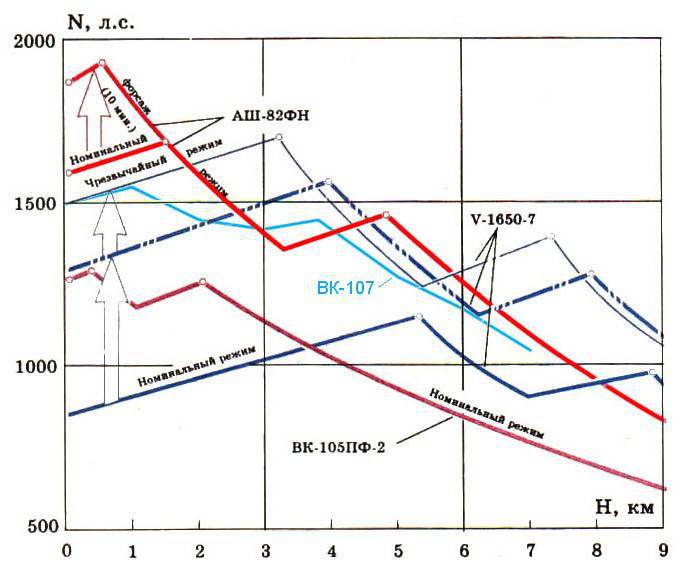
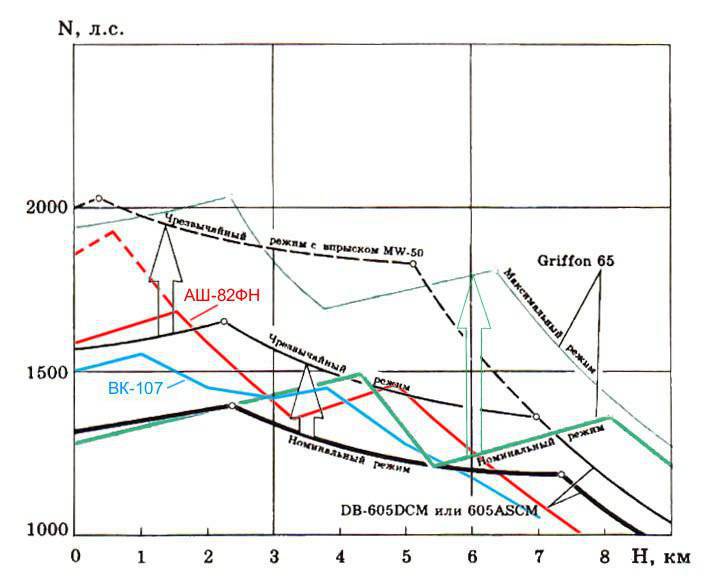
A significant impact on the combat capability of the fighter has its weapons. In terms of the composition and location of the weapons, the aircraft under consideration differed quite strongly. If the Soviet Yak-3 and La-7 and the German Bf 109G and K had a central location of weapons (guns and machine guns in the forward fuselage), then at the Spitfires and Mustangs it was located in the wing outside the area swept by the propeller. In addition, the Mustang had only large-caliber machine-gun armament, while other fighters also had cannons, while the La-7 and Bf 109K-4 had only gun armament. In the Western theater of war P-51D was intended primarily to fight the enemy fighters. For this purpose, the power of his six machine guns turned out to be quite sufficient. Unlike the Mustang, the British Spitfires and the Soviet Yak-3 and La-7 fought aircraft of any designation, including bombers, which naturally required more powerful weapons.
Comparing the wing and central weapons, it is difficult to answer which of these schemes was the most effective. But still, Soviet front-line pilots and aviation specialists, as well as German, preferred the central one, which ensured the highest accuracy of fire. Such an arrangement turns out to be more advantageous when an attack on an enemy aircraft is carried out from extremely short distances. Namely, the Soviet and German pilots usually tried to act on the Eastern Front. In the West, air battles were conducted mainly at high altitude, where the maneuverability of fighters deteriorated significantly. Getting close to the enemy at close range became much more difficult, and with bombers it was also very dangerous, since the fighter, because of the sluggish maneuver, found it difficult to evade the fire of air gunners. For this reason, they opened fire from a distance and the wing installation of weapons, designed for a given range of destruction, turned out to be quite comparable with the central one. In addition, the weapon’s rate of fire with the wing pattern was higher than that of weapons synchronized for firing through propellers (guns on the La-7, machine guns on the Yak-3 and Bf 109G), the armament turned out to be near the center of gravity and the ammunition consumption had almost no effect on it. position. But one drawback was still organically inherent in the wing pattern - this is an increased moment of inertia relative to the longitudinal axis of the aircraft, due to which the fighter’s reaction to the pilot’s actions worsened.
Among the many criteria that determined the combat capability of the aircraft, the most important for the fighter was the combination of its flight data. Of course, they are important not on their own, but in combination with a number of other quantitative and qualitative indicators, such as, for example, stability, pilotage properties, ease of operation, overview, etc. For some classes of aircraft, training, for example, these indicators are of paramount importance. But for combat vehicles of the past war, flight characteristics and armaments, which are the main technical components of the combat effectiveness of fighters and bombers, are decisive. Therefore, the designers sought, first of all, to achieve priority in the flight data, and more specifically, in those of them that played a primary role.
It should be clarified that the words "flight data" means a whole set of important indicators, the main ones for fighters were maximum speed, climb, range or flight departure time, maneuverability, ability to quickly pick up speed, sometimes a practical ceiling. Experience has shown that the technical excellence of fighters cannot be reduced to a single criterion, which would be expressed by a number, formula, or even an algorithm calculated for implementation on a computer. The question of comparing fighters, as well as finding the optimal combination of basic flight characteristics, still remains one of the most difficult. How, for example, to determine in advance what was more important - superiority in maneuverability and practical ceiling, or some advantage in maximum speed? As a rule, priority in one is obtained at the expense of the other. Where is the "golden mean" that gives the best fighting qualities? Obviously, much depends on the tactics and nature of the war in the air as a whole.
It is known that the maximum speed and rate of climb significantly depend on the mode of operation of the motor. One thing is a long or nominal mode, and quite another - an emergency boost. This is clearly seen from the comparison of the maximum speeds of the best fighters of the final period of the war. The presence of high power modes significantly improves the flight characteristics, but only for a short time, since otherwise the engine may be destroyed. For this reason, a very short-term emergency mode of the engine, which gave the greatest power, was not considered at that time as the main one for the operation of the power plant in aerial combat. It was intended for use only in the most emergency, deadly for the pilot situations. This situation is well confirmed by the analysis of flight data of one of the last German piston fighters - Messerschmitt Bf 109К-4.
The main characteristics of Bf 109K-4 are given in fairly extensive materials of a report prepared at the end of 1944 for the German Chancellor. The report covered the state and prospects of the German aircraft industry and was prepared with the participation of the German Aviation Research Center DVL and leading aviation companies such as Messerschmitt, Arado, Junkers. This document, which has every reason to be considered serious enough, when analyzing the capabilities of the Bf 109К-4, all its data correspond only to the continuous operation mode of the power plant, and the characteristics of the maximum power mode are not considered or even mentioned. And this is not surprising. Due to the thermal overloads of the motor, the fighter’s pilot could not even use the nominal mode for a long time while climbing with the maximum take-off weight, and was forced to reduce the engine speed and, accordingly, power already after 5,2 minutes after take-off. When taking off with less weight, the situation did not improve much. Therefore, it is simply not necessary to talk about any real increase in rate of climb through the use of emergency mode, including with the injection of a water-alcohol mixture (MW-50 system).
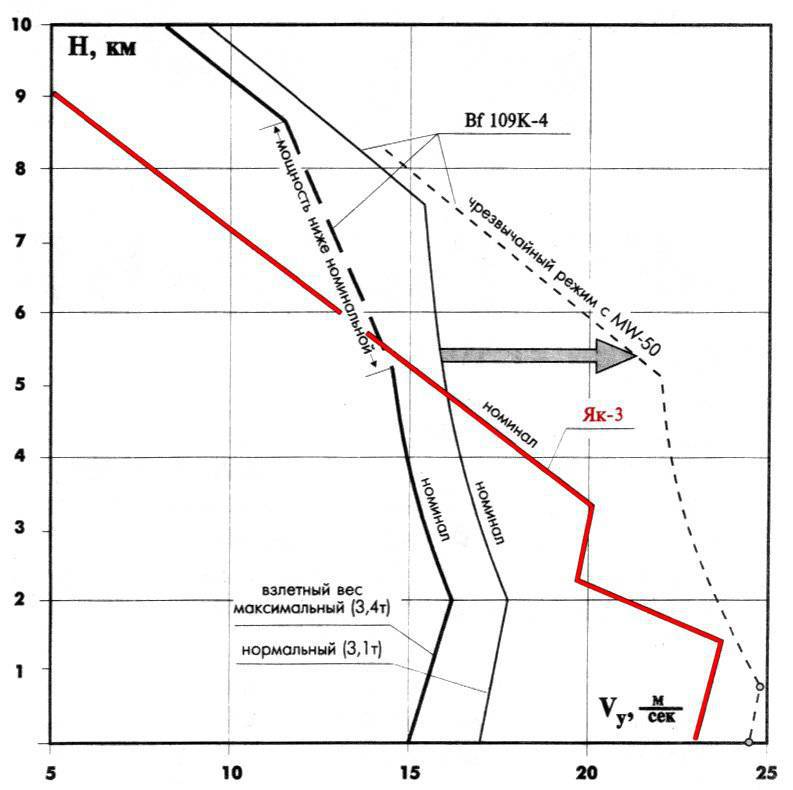
The graph of the vertical rate of climb (in fact, this is a characteristic climb rate) clearly shows how much growth could give the use of maximum power. However, this increase is more of a formal nature, since it was impossible to climb on such a regime. Only at certain moments of the flight could a pilot turn on the MW-50 system, i.e. emergency power boost, and even then, when the cooling system had the necessary reserves for heat dissipation. Thus, the MW-50 forcing system, although it was useful, was not vital for the Bf 109K-4 and, therefore, it was not put on all fighters of this type. Meanwhile, the Bf 109K-4 data is published in the press, corresponding to the emergency mode using the MW-50, which is absolutely not characteristic of this aircraft.
The above is well confirmed by the combat practice of the final stage of the war. Thus, the Western press often speaks of the superiority of the Mustangs and Spitfires over German fighters in the western theater of operations. On the Eastern Front, where the air battles took place at low and medium altitudes, the Yak-3 and La-7 were out of competition, which was repeatedly noted by the pilots of the Soviet Air Force. But the opinion of the German military pilot V. Wolfrum:
The best fighters I met in combat were the North American Mustang P-51 and the Russian Yak-9U. Both fighters had a clear performance advantage over the Me-109 regardless of the modification, including the Me-109K-4
Comments are apparently superfluous. It can only be explained that the Yak-9U had a speed close to the La-7, and the climb rate on the nominal is slightly lower than that of the Yak-3 and La-7.
A little different than the Bf 109K-4, the situation was with the "Mustang" and "Spitfire" XIV. The V-1650-7 engine, which stood on the P-51D, had not only an 5-minute emergency, but also an 15-minute combat mode of operation. This time was enough for active air combat, and the Mustang constantly had the advantage in speed over the entire height range compared to the Bf 109K-4. True, even in these conditions, the P-51D climb rate was worse than that of the Soviet fighters, Spitfire and Bf 109К-4. This lack of it was due to a completely natural cause — a much larger relative supply of fuel. A lot of fuel was required to obtain a very significant range for a fighter, required to accompany heavy bombers.
Unlike the V-1650-7, the Griffon 65 had no combat mode of operation, and the Spitfire XIV pilot could use either the nominal mode or 5-minute maximum in individual episodes of air combat.
It would be a mistake to assume that emergency power regimes are not very necessary for fighters. This is not true. Already their presence added to the pilot confidence in the battle and provided a potential opportunity at some moments to obtain an additional increase in the power supply and thereby achieve temporary superiority or break away from the enemy prepared for the attack. Although not these modes of operation of the engines determined the capabilities of fighters.
When comparing the altitude and speed characteristics, one can clearly see a significant difference in the altitude of the Soviet and Western combat vehicles. At low and medium altitudes, the Yak-3 and La-7 had a clear advantage over the higher-altitude Spitfire and Bf 109K-4. At altitudes 7-8 km superiority in speed was entirely on the side of Western fighters. The same can be said about the climb, only in this case, the superiority of the "Spitfire" XIV and Bf 109K-4 showed at altitudes above 5 km. Below, the Yak-3 and La-7 reigned supreme.
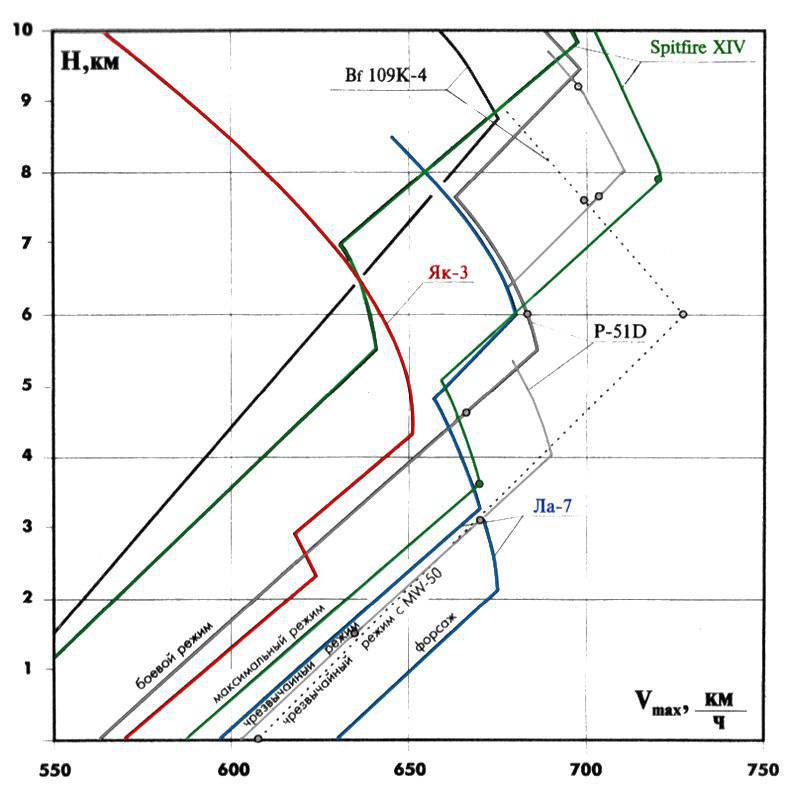
In fairness, it should be noted that when creating the latest Bf 109 modifications, such as G-10, K-4 and K-6, the German designers sought, first of all, to improve the height characteristics of the aircraft, even to the detriment of its combat capability at low and medium altitude, where Bf 109К-4 was inferior in speed and rate of climb to that developed much earlier than Bf 109G-2 (1942). The high-altitude emphasis was needed to increase the Bf 109's combat capability in an increasingly fierce air war on the Western Front.
There are several important indicators, the impact of which on the combat capability of fighters is very large. One of them - a review from the cockpit. It was not by chance that combat pilots often gave preference to a plane with a better view, even despite some deficit in flight data. Attracted the ability to continuously see the air situation. In this regard, was out of competition P-51D. The drop-shaped lantern and high landing of the pilot gave a great overview, incomparably better than the Bf 109K-4, Spitfire XIV, and even the Yak-3 and La-7.
Among the first jet fighters are the twin-engined Messerschmitt Me 262 (Germany) and Gloucester Meteor (England) aircraft, which were mass-produced and used at the end of the war.
Although the first jet planes had a number of significant shortcomings, but, undoubtedly, their appearance marked the beginning of a qualitatively new stage in the development of aviation and was a great achievement of the aircraft construction of those years. Shortly after the end of the Second World War, jet engines became the basis of fighter aircraft of developed countries.
Paying tribute to the achievements of the German and British aircraft manufacturers, it should be noted that the mentioned jet fighters had a relatively narrow range of tactical use. Even the most advanced of them Me 262 was used mainly as a fighter-bomber and interceptor. Its main advantage was high speed, on the 140-180 km / h more than the Bf 109K-4. As an interceptor fighter, the Me 262 had another advantage. It consisted in the fact that although the Me 262 was inferior to the Bf 109К-4 in the climb rate, but due to the significantly higher speed in the climb mode, it could attack the enemy at more distant lines.
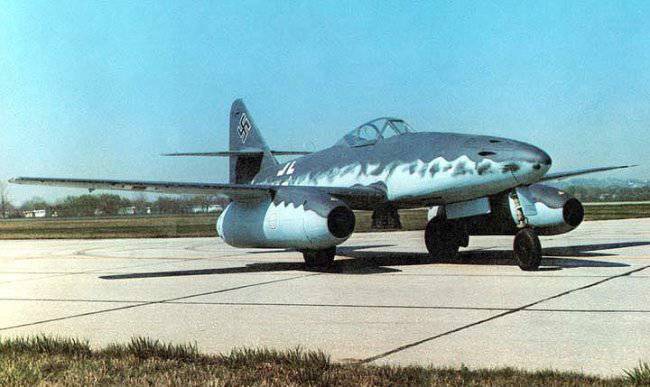
I must say that the Me 262 had a number of shortcomings that reduced the potential capabilities of this fighter. For example, when intercepting heavy American bomber B-17 and B-24, flying at altitudes 7-8 km, the pilot, as a rule, could not attack them from the most advantageous position for the fighter - from behind from above. The fast acceleration of Me 262 (engines at this height were forbidden to throttle) could in this case lead to falling into the then poorly studied region of transonic speeds. Getting the plane out of a dive that had become uncontrollable was almost impossible. In addition, Me 262 demanded well-prepared airfields, at least twice as large as those on which the front-line aviation was based. This circumstance did not play a significant role in defensive actions, but to participate in offensive operations Me 262 for this reason would not be very suitable.
Summing up, I note that Germany could not create a fighter that could equally well withstand allied fighters on both the Western and Eastern fronts. P-51D "Mustang", "Spitfire" XIV, Yak-3 and La-7, optimized for certain conditions of air combat, had superiority over Bf 109К-4 (a similar result would have been obtained when comparing another serial German fighter of the final stage of the war Focke-Wulf FW 190D-9). At the same time, Germany turned out to be a leader in the field of jet aircraft, creating an outstanding Me-262 fighter. Similar machines appeared in the Allied armies only a few years later.
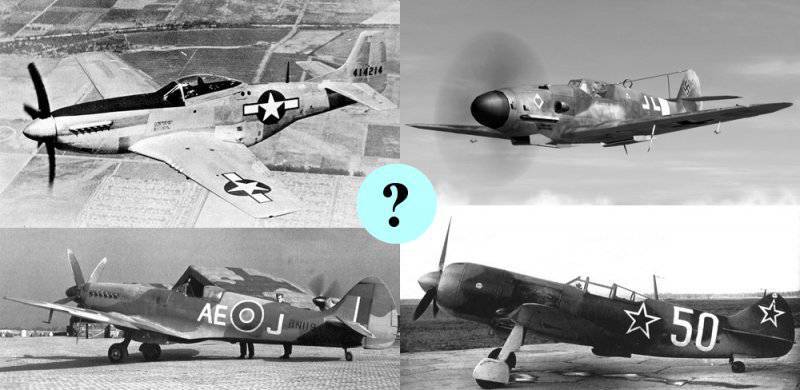
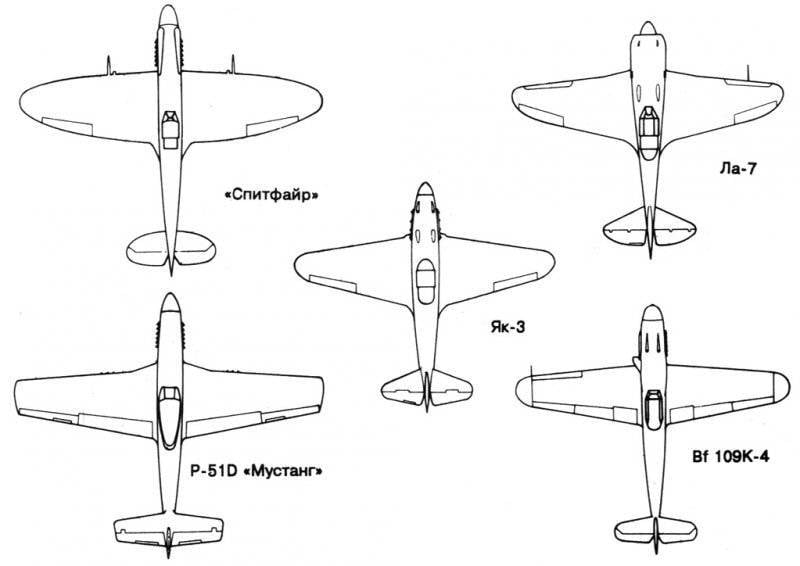
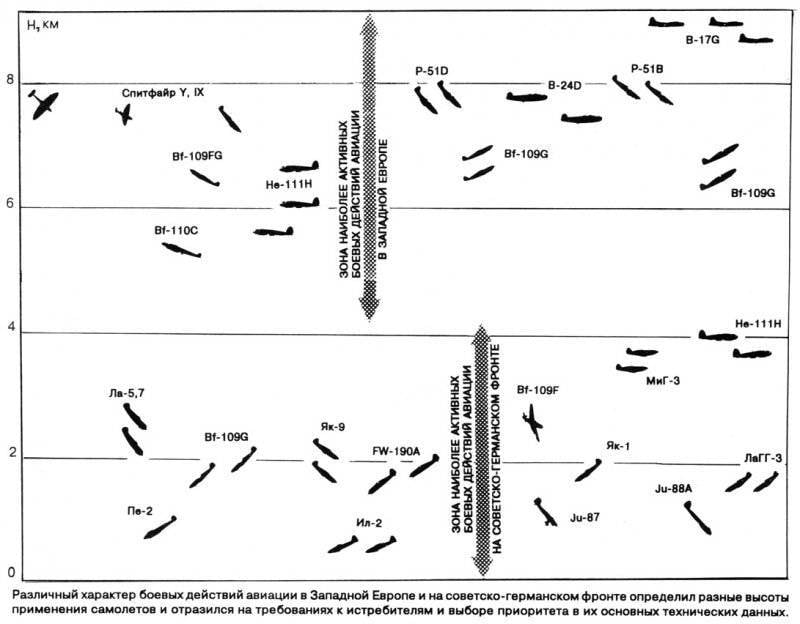
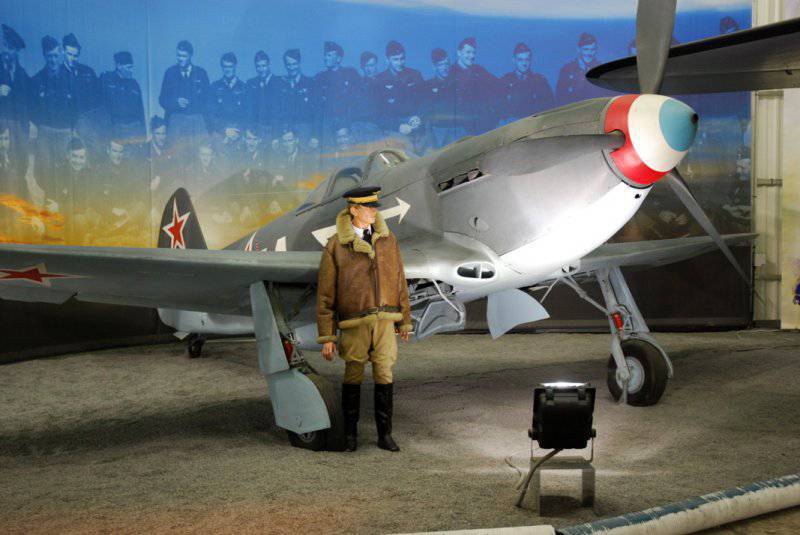
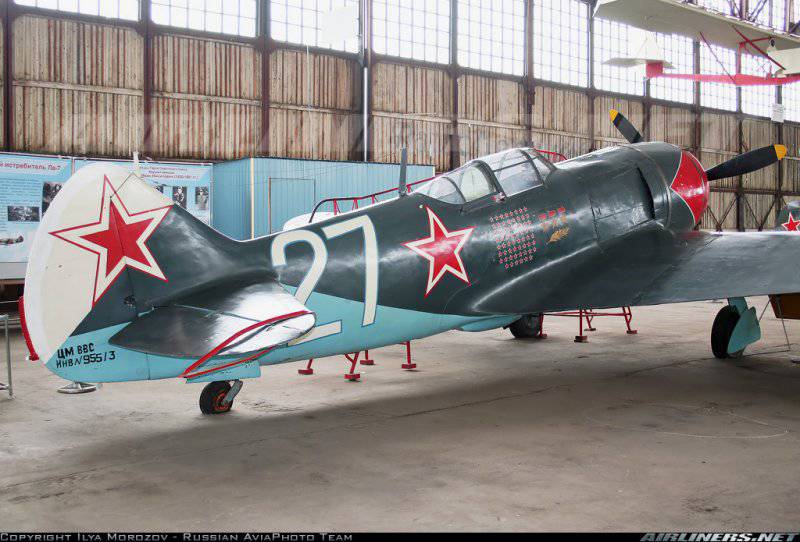
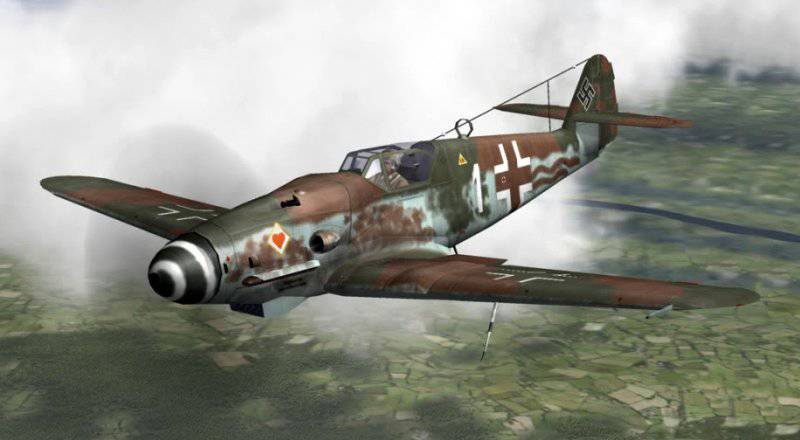
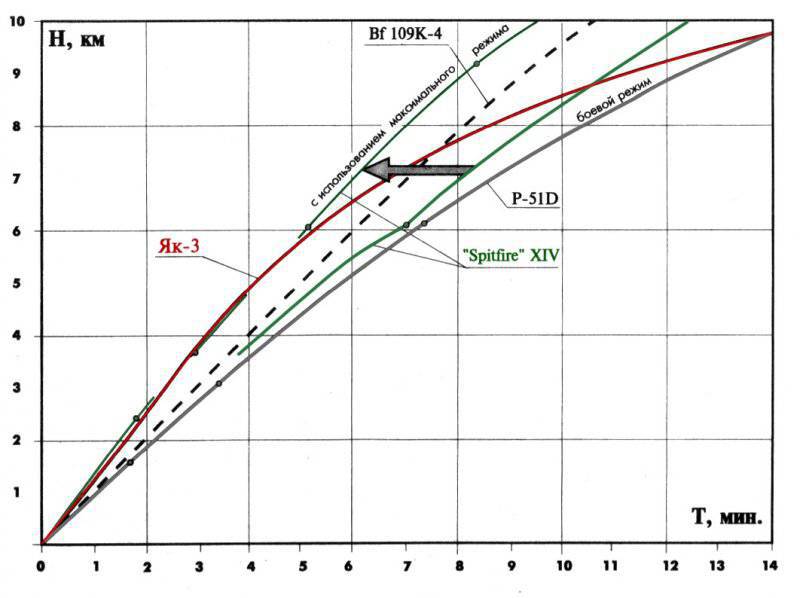
Information